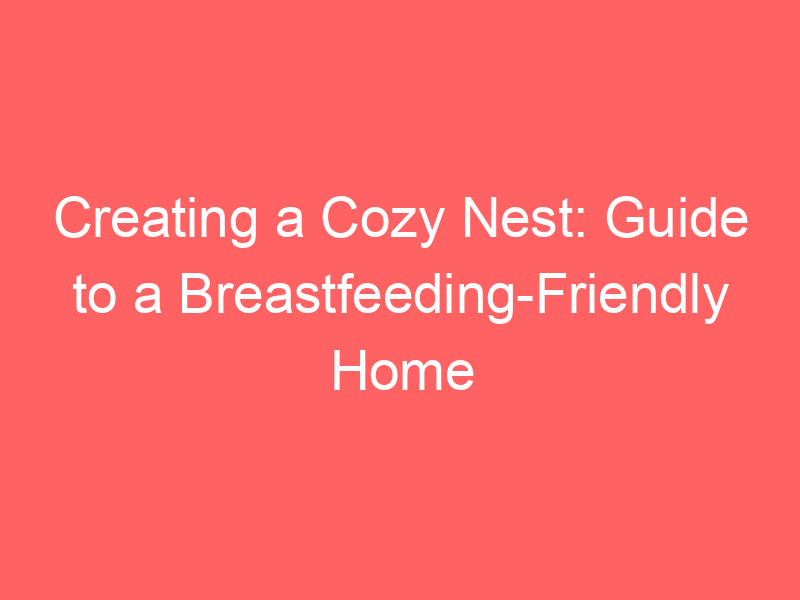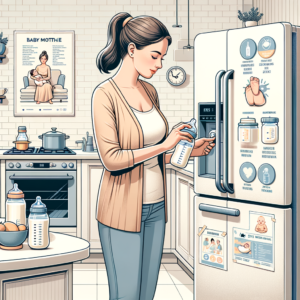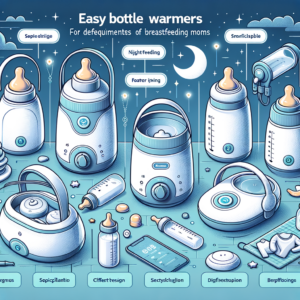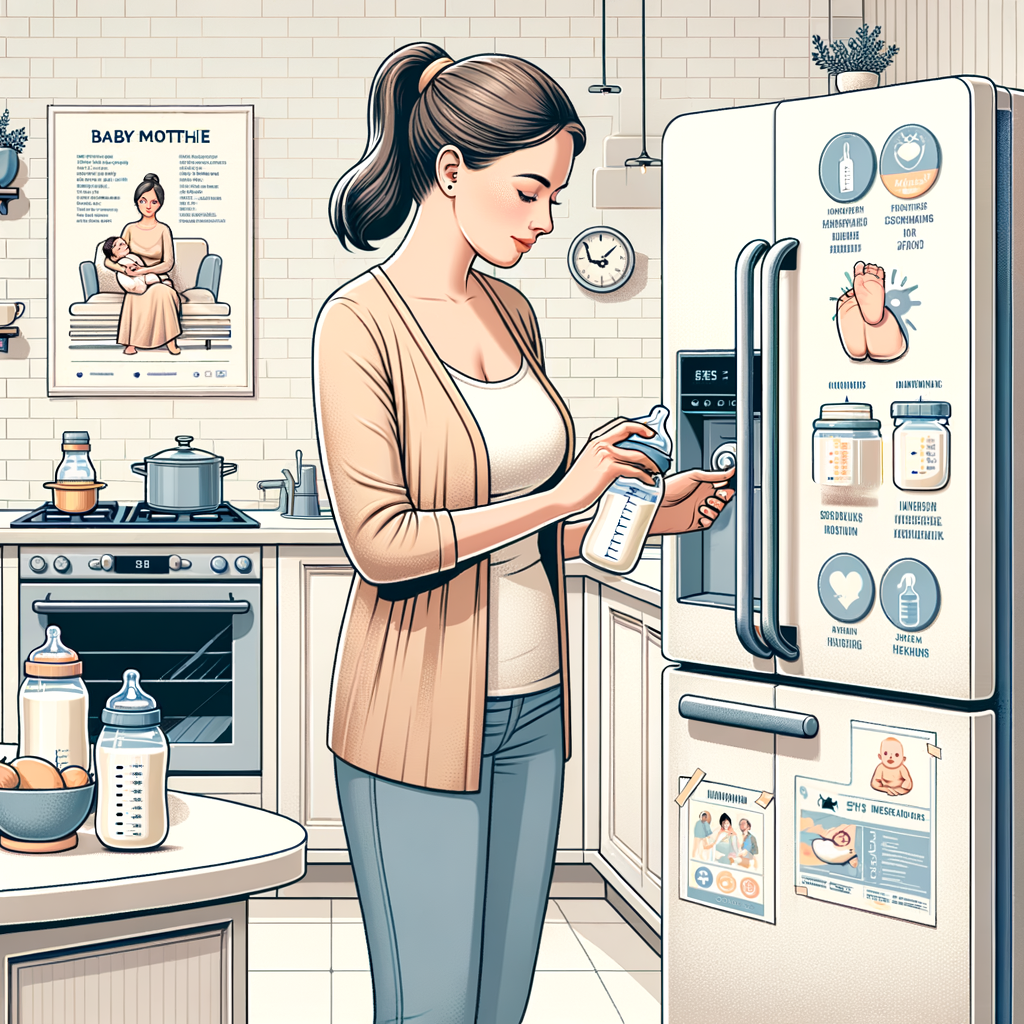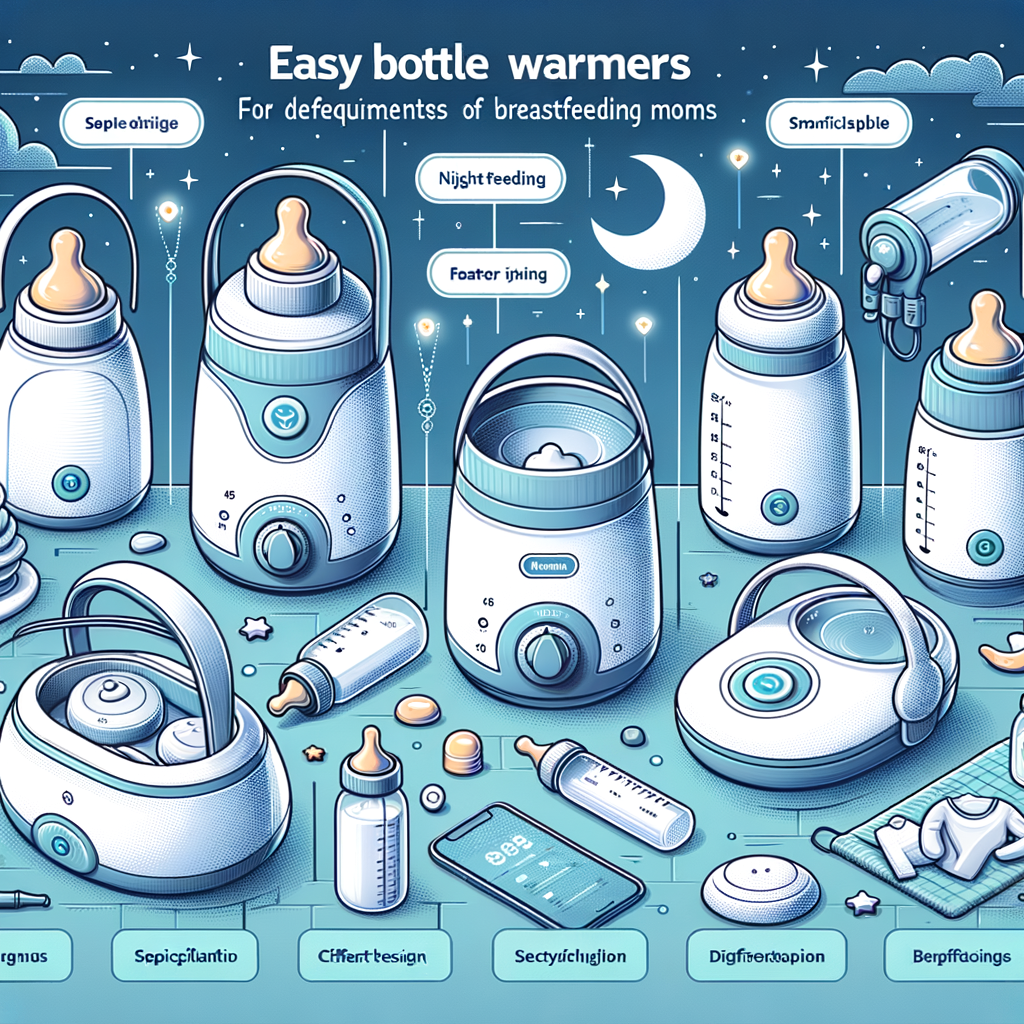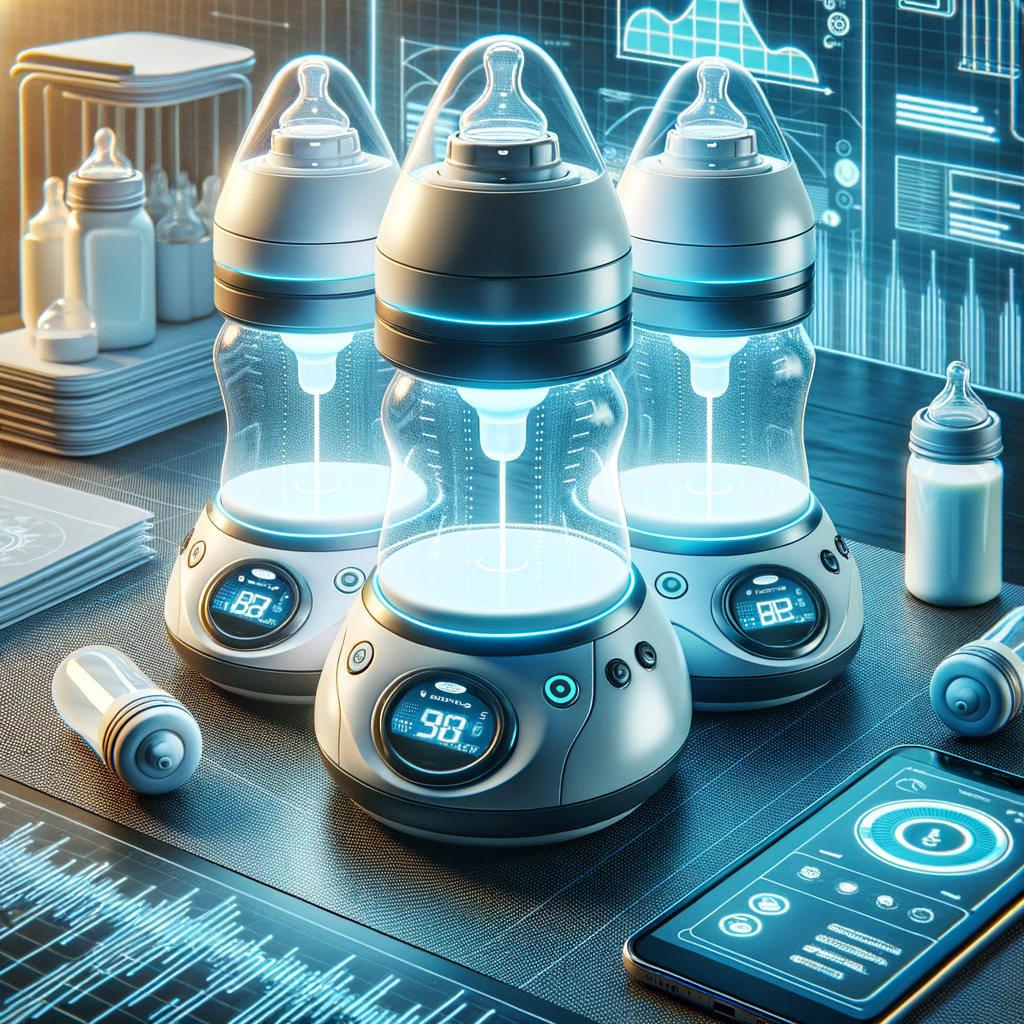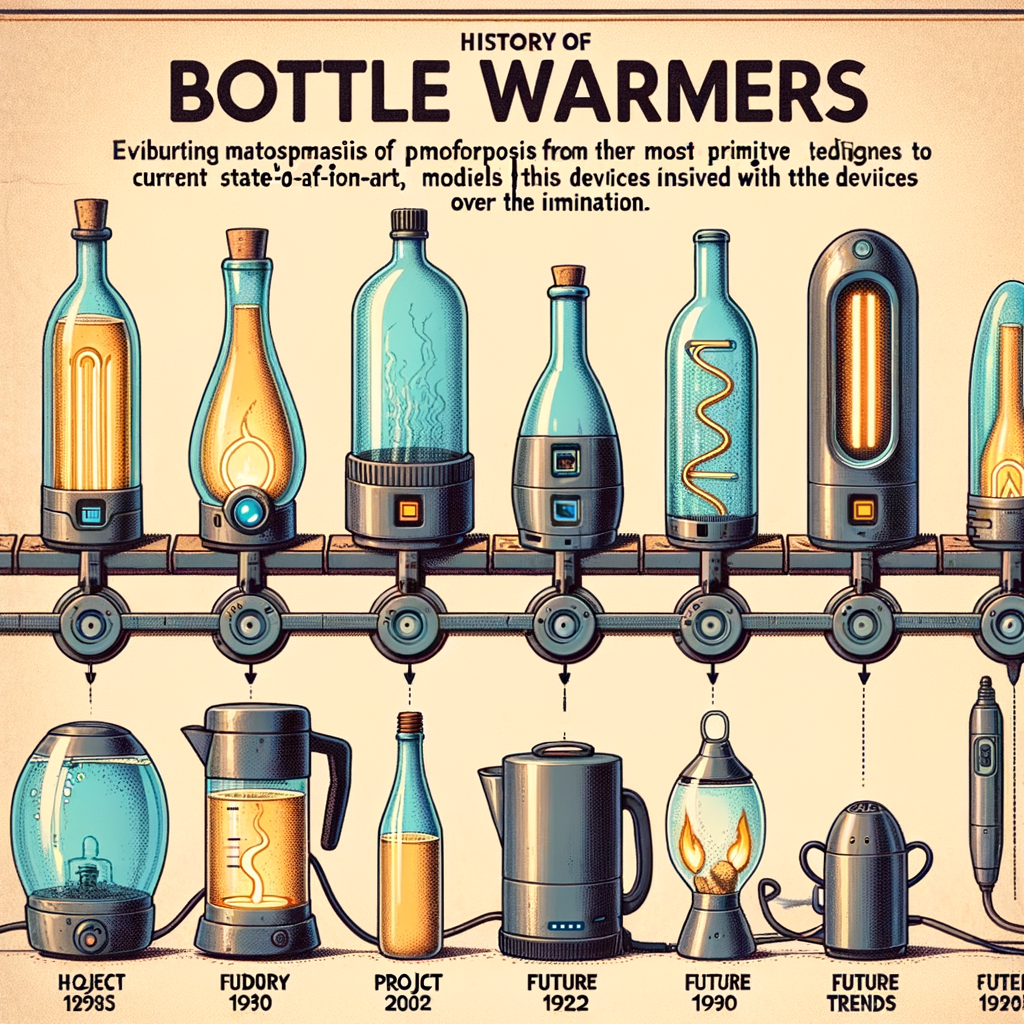Introduction to Breastfeeding at Home
When it comes to feeding your newborn, breastfeeding is a natural and beneficial choice. Not only does it provide essential nutrients, but it also fosters a unique bond between mother and child. However, it’s important to create a comfortable and supportive environment at home for breastfeeding. In this post, we will explore the importance of a breastfeeding-friendly home environment and the benefits of breastfeeding at home.
- The importance of a breastfeeding-friendly home environment
Creating a breastfeeding-friendly environment at home is crucial for both the mother and the baby. A calm and comfortable space can help reduce stress and make the breastfeeding process easier. It’s not just about physical comfort, but also about emotional well-being. A supportive environment can help a new mother feel more confident and relaxed, which can, in turn, promote better milk production. According to Wikipedia, a positive environment can also enhance the baby’s feeding experience and contribute to their overall health and development.
- Benefits of breastfeeding at home
There are numerous benefits to breastfeeding at home. Firstly, it allows for flexibility. You can feed your baby whenever they are hungry, without worrying about finding a private space. Secondly, breastfeeding at home can help strengthen the bond between mother and baby. This close contact can help your baby feel secure and loved. Thirdly, breastfeeding at home can save money as it eliminates the need for expensive formula milk. Lastly, breastfeeding can provide health benefits for both mother and baby. According to Wikipedia, breastfeeding can help protect babies from infections and diseases, and it can also help mothers recover from childbirth more quickly.
In conclusion, breastfeeding at home, in a supportive and comfortable environment, can be a rewarding experience for both mother and baby. It’s not just about nutrition, but also about nurturing a loving relationship. So, let’s explore how to create a breastfeeding-friendly space at home in the next section.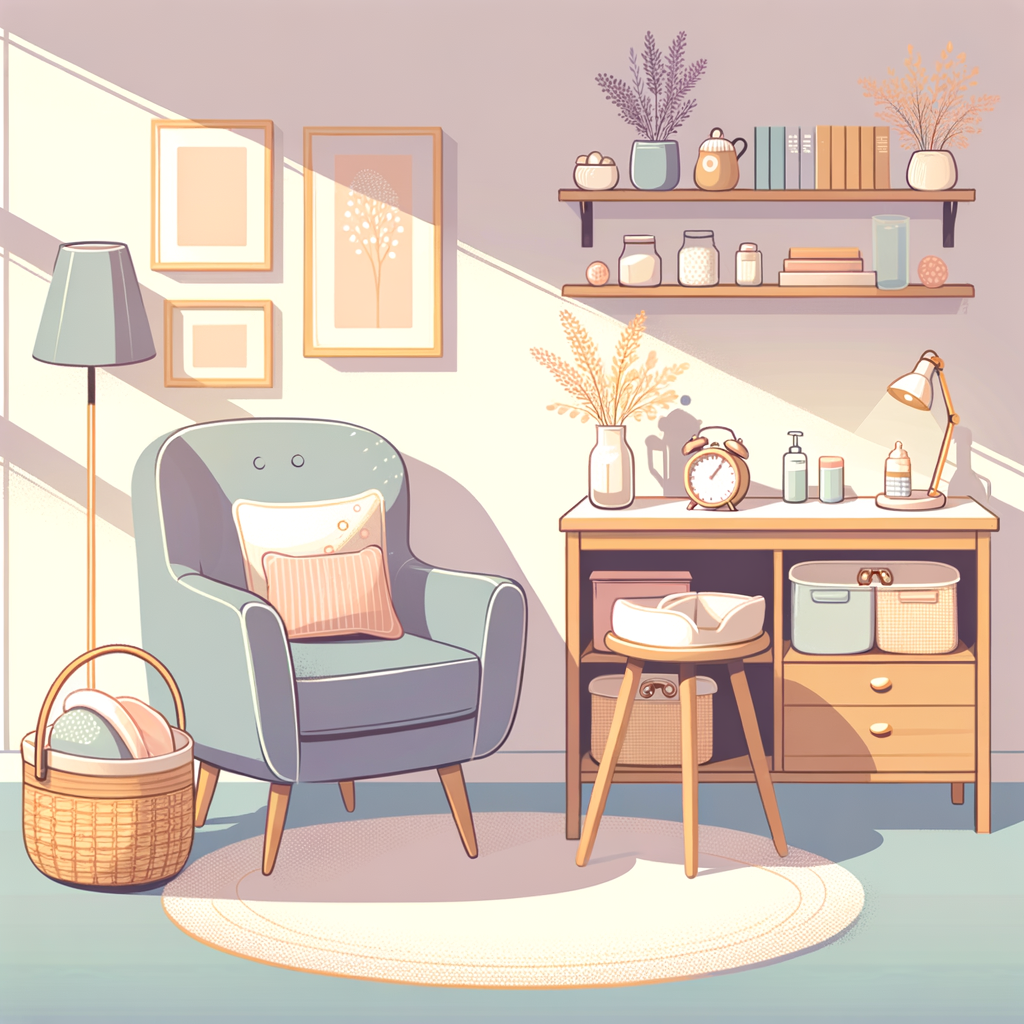
Creating a Breastfeeding-Friendly Space
When it comes to breastfeeding, comfort and privacy are key. The right environment can make a significant difference in your breastfeeding journey. Let’s explore how to choose the right location for breastfeeding at home.
Choosing the Right Location
Choosing the right location for breastfeeding is crucial. It should be a place where both you and your baby feel comfortable and relaxed. Here are some factors to consider and examples of ideal locations at home.
-
- Factors to consider when choosing a breastfeeding spot
When selecting a spot for breastfeeding, consider the following factors:
-
-
- Comfort: Choose a spot where you can sit comfortably for extended periods. A supportive chair or bed with plenty of pillows can be ideal.
- Privacy: If you prefer privacy while breastfeeding, select a location that’s away from high traffic areas in your home.
- Convenience: Your chosen spot should be near your baby’s crib or bed, and close to supplies like diapers, wipes, and burp cloths.
- Lighting: Adequate lighting is important, especially for night-time feedings. Consider a location with a dimmable light source.
- Examples of ideal breastfeeding locations at home
-
Here are some examples of ideal locations for breastfeeding at home:
-
- Nursery: If you have a nursery, a comfortable chair near your baby’s crib can be a perfect spot.
- Bedroom: Your own bed can provide comfort and convenience, especially for night-time feedings.
- Living room: A quiet corner of your living room with a comfortable chair or couch can also work well.
Remember, the best breastfeeding spot is one that meets your unique needs and preferences. Experiment with different locations until you find what works best for you and your baby.
Designing Your Breastfeeding Space
Creating a breastfeeding-friendly space at home involves more than just picking the right location. It’s also about designing a space that promotes comfort, convenience, and a positive breastfeeding experience. Here are some steps to consider:
- Creating a Comfortable Seating Arrangement
Comfort is key when breastfeeding. You’ll be spending a lot of time in your breastfeeding chair, so it’s important to choose a seat that provides good support for your back and arms. Consider a chair with a soft cushion and armrests. A footstool can also be helpful to elevate your feet and reduce strain on your back. You may also want to have a small table or side stand within reach to place items like water, snacks, or your phone.
- Ensuring Adequate Lighting
Lighting plays a crucial role in your breastfeeding space. It should be bright enough for you to see what you’re doing, especially during late-night feedings, but not so bright that it disturbs your baby’s sleep. Consider using a dimmable lamp or a nightlight. Natural light during the day can also be beneficial, so if possible, set up your breastfeeding space near a window.
- Organizing Necessary Breastfeeding Supplies
Having all your breastfeeding supplies organized and within reach can make the process smoother. Consider having a small basket or organizer where you can keep items like nursing pads, nipple cream, burp cloths, and a water bottle. If you’re using a breast pump, have a clean, designated area for it. Remember, the goal is to create a space that makes breastfeeding as easy and stress-free as possible for you.
In conclusion, designing your breastfeeding space is a personal process. What works for one person may not work for another. The most important thing is that the space meets your needs and makes you feel comfortable and relaxed. Happy breastfeeding!
Home Setup for Breastfeeding
Creating a comfortable and functional space for breastfeeding is crucial for both the mother and the baby. This section will guide you on selecting the essential furniture to enhance your breastfeeding experience at home.
Essential Furniture
The right furniture can make a significant difference in your breastfeeding journey. Here are some key pieces you should consider:
-
- Choosing a comfortable chair for breastfeeding
A comfortable chair is a must-have for breastfeeding. It should provide ample support for your back and arms, ensuring you can maintain a comfortable position during feeding sessions. A chair with a high back and armrests is ideal. Some mothers prefer a rocking chair as the gentle motion can soothe the baby. Remember, comfort is key, so choose a chair that suits your needs and preferences.
-
- Benefits of having a side table
A side table is another essential piece of furniture for breastfeeding. It provides a convenient place to keep items you might need during breastfeeding, such as a water bottle, snacks, baby wipes, and a burp cloth. Having these items within reach can make breastfeeding sessions smoother and less stressful. A side table with drawers or shelves can provide additional storage space.
Remember, the goal is to create a comfortable, functional, and peaceful space for you and your baby. The right furniture can significantly contribute to achieving this goal.
Useful Accessories
When setting up your home for breastfeeding, there are a few accessories that can make the process easier and more comfortable. Let’s take a look at two of these key items.
-
- Importance of Breastfeeding Pillows
A breastfeeding pillow is a specially designed cushion that supports your baby while you’re nursing. This accessory is not just for comfort, it also plays a crucial role in ensuring a proper latch and preventing common breastfeeding issues such as backaches and sore nipples.
According to a study by the American Academy of Pediatrics, using a breastfeeding pillow can help maintain a comfortable posture during feeding, reducing the risk of musculoskeletal discomfort. The pillow also helps position the baby correctly for effective feeding, reducing the risk of issues like poor weight gain and painful feeding.
-
- Keeping a Water Bottle and Snacks Nearby
Staying hydrated and nourished is essential for breastfeeding mothers. Having a water bottle and healthy snacks within reach can help you maintain your energy levels during feeding sessions. This is particularly important as breastfeeding can make you feel thirsty and hungry more often.
According to the World Health Organization, breastfeeding mothers should increase their fluid intake to support milk production. Snacks such as fruits, nuts, and yogurt can provide the necessary nutrients and energy for this demanding period.
In conclusion, a breastfeeding pillow and keeping a water bottle and snacks nearby are not just useful accessories, but essential items for a comfortable and effective breastfeeding experience at home.
Breastfeeding Environment Tips
Creating a conducive environment for breastfeeding is crucial for both the mother and the baby. One of the key aspects to consider is maintaining a calm and serene atmosphere. Let’s delve into why this is important and how you can achieve it.
Maintaining a Calm Atmosphere
When it comes to breastfeeding, the atmosphere plays a significant role in the overall experience. A calm and peaceful environment not only helps the baby to feed better but also allows the mother to relax and enjoy this special bonding time. Here are a few tips:
- Benefits of a quiet and peaceful environment: A quiet environment helps the baby to focus on feeding and can also enhance the production of breast milk. According to a study, babies who are breastfed in a peaceful environment tend to feed more efficiently and are less likely to be fussy or irritable.
- Role of soothing music or white noise: Soft music or white noise can help to create a soothing atmosphere for breastfeeding. It can mask distracting noises and help the baby to relax. In fact, some studies suggest that white noise can even promote better sleep for the baby after feeding.
Remember, the goal is to make breastfeeding a pleasant and stress-free experience for both you and your baby. A calm and peaceful environment can significantly contribute to achieving this goal.
Keeping the Space Clean and Hygienic
When it comes to breastfeeding, maintaining a clean and hygienic environment is crucial. Not only does it contribute to the overall health of the baby, but it also ensures a comfortable and safe space for both the mother and the child.
-
- Importance of Cleanliness for the Baby’s Health
Keeping your breastfeeding area clean is not just about aesthetics, it’s a matter of your baby’s health. Babies have a developing immune system, making them more susceptible to infections and diseases. According to the World Health Organization, cleanliness plays a vital role in preventing illnesses in infants. Therefore, a clean breastfeeding area can help protect your baby from harmful bacteria and viruses.
-
- Tips for Keeping the Breastfeeding Area Clean
Here are some practical tips to ensure a clean and hygienic breastfeeding area:
-
- Regular Cleaning: Clean the area where you breastfeed at least once a day. Use a mild, non-toxic cleaner to wipe down surfaces.
- Hand Hygiene: Always wash your hands before and after breastfeeding. This simple step can drastically reduce the spread of germs.
- Proper Storage: If you’re using breastfeeding accessories like pumps or bottles, ensure they are properly cleaned and stored after each use.
- Laundry: Regularly wash any fabrics in the breastfeeding area, such as blankets or clothing, to remove any potential contaminants.
Remember, a clean and hygienic breastfeeding environment contributes significantly to your baby’s health. By following these tips, you can create a safe and comfortable space for you and your baby.
Comfortable Breastfeeding at Home
One of the key elements to comfortable breastfeeding at home is wearing the right clothes. Not only should these clothes be comfortable, but they should also be nursing-friendly.
Wearing Comfortable Clothes
When it comes to breastfeeding, the clothes you wear can make a significant difference. Wearing comfortable, nursing-friendly clothes can make the experience more enjoyable and less stressful.
-
- Benefits of wearing nursing-friendly clothes
Nursing-friendly clothes offer several benefits. They make breastfeeding easier and more convenient, as they often have special features like flaps or panels that allow easy access for your baby. They also provide comfort, which is essential when you’re breastfeeding multiple times a day. Wearing clothes that are easy to nurse in can also help you feel more confident and less self-conscious about breastfeeding in public.
-
- Examples of comfortable clothing for breastfeeding
There are many types of comfortable, nursing-friendly clothes available. Some examples include:
-
- Nursing bras: These are designed with flaps that you can easily open and close for breastfeeding.
- Nursing tops: These tops come with hidden panels or zippers that make breastfeeding easy and discreet.
- Nursing dresses: Like nursing tops, these dresses have special features that make breastfeeding convenient.
- Button-down shirts: These can be easily opened for breastfeeding, and they’re a stylish option that you can wear even when you’re not nursing.
Remember, the most important thing is that you’re comfortable and confident. So, choose clothes that you love and that make breastfeeding easier for you.
Staying Hydrated and Well-Nourished
When it comes to breastfeeding, maintaining a healthy diet and staying hydrated are crucial. Let’s delve into why this is so important and how you can ensure you’re meeting your nutritional needs.
-
- Importance of Hydration and Nutrition for Breastfeeding Mothers
Hydration and nutrition play a pivotal role in the production of breast milk. The body needs a significant amount of water to produce milk, making hydration a key factor for breastfeeding mothers. According to Wikipedia, a mother’s body requires an additional 300-500 calories per day to produce breast milk. This means that a well-balanced diet, rich in nutrients, is essential for maintaining milk production and ensuring the baby receives all the necessary nutrients.
-
- Tips for Maintaining a Healthy Diet While Breastfeeding
Here are some tips to help you maintain a healthy diet while breastfeeding:
-
- Stay Hydrated: Aim to drink at least 8-10 glasses of water a day. This can include other fluids like milk, juice, and soup.
- Eat Balanced Meals: Include a variety of foods in your diet to ensure you’re getting a wide range of nutrients. This should include fruits, vegetables, whole grains, lean proteins, and healthy fats.
- Snack Smart: Opt for healthy snacks like nuts, yogurt, or fruit to keep your energy levels up between meals.
- Limit Caffeine and Alcohol: Both can affect your baby through breast milk, so it’s best to limit your intake.
Remember, every mother’s body is unique. What works for one may not work for another. It’s always best to consult with a healthcare professional or a nutritionist to create a personalized diet plan that suits your body’s needs while breastfeeding.
Conclusion: Making Home Breastfeeding-Friendly
As we conclude, it’s important to remember that creating a breastfeeding-friendly environment at home is not just beneficial, but essential for both the mother and the baby. Let’s recap some of the key takeaways from this post and provide some encouragement for those on this journey.
-
- Recap of key takeaways:
Firstly, we discussed the importance of creating a comfortable and quiet space for breastfeeding. This could be a designated room or a corner in your living room, as long as it’s a place where you and your baby can relax and bond.
Secondly, we highlighted the need for a proper home setup. This includes having all the necessary items like nursing pillows, breast pumps, and comfortable chairs within reach.
Lastly, we shared some tips on how to create a positive breastfeeding environment. Remember, it’s important to maintain a calm and stress-free atmosphere as it can significantly impact the breastfeeding process.
-
- Encouragement for creating a breastfeeding-friendly home:
Creating a breastfeeding-friendly home might seem challenging at first, but remember, it’s all about making small, manageable changes. Start by designating a comfortable space, and gradually add in the necessary items as you go along.
Remember, every mother’s breastfeeding journey is unique, and what works for one might not work for another. So, don’t be discouraged if you need to try a few different setups before finding what works best for you and your baby.
Most importantly, be patient with yourself. Breastfeeding is a learning process for both you and your baby. With time, patience, and a supportive environment, you’ll soon find your rhythm.
By following the tips and advice shared in this post, you can create a breastfeeding-friendly home that supports your journey as a new mother. Remember, the goal is not perfection, but comfort and ease for both you and your baby.

